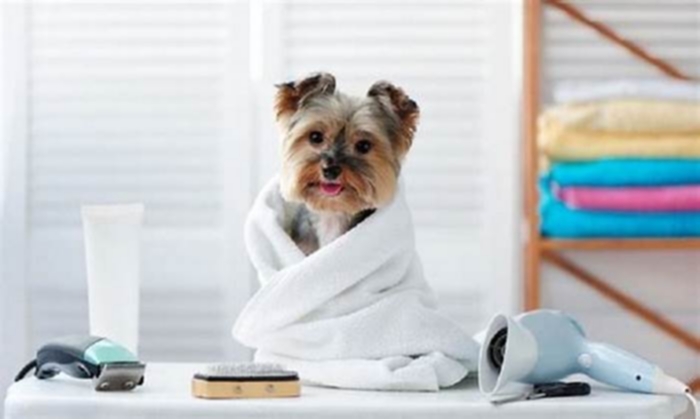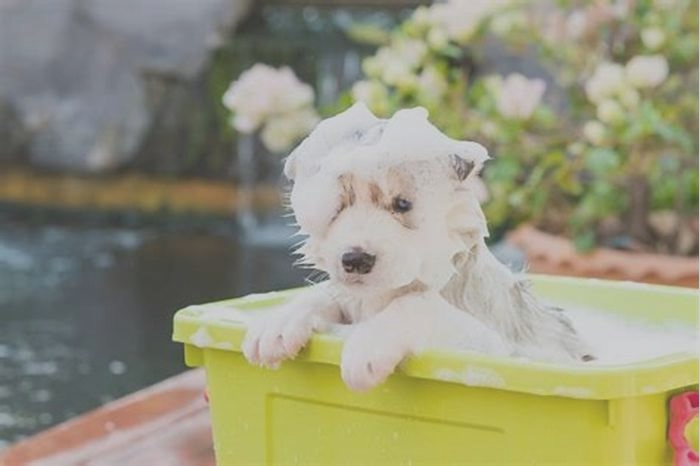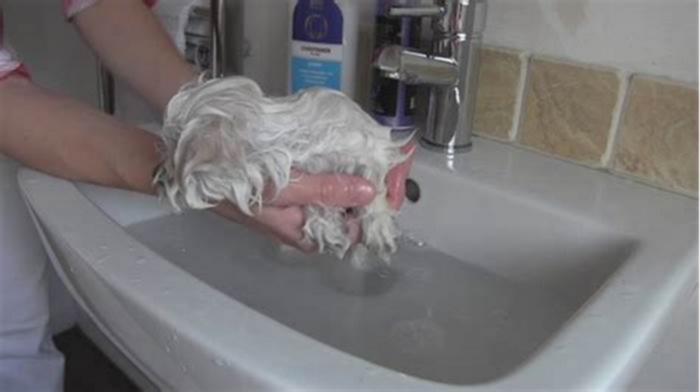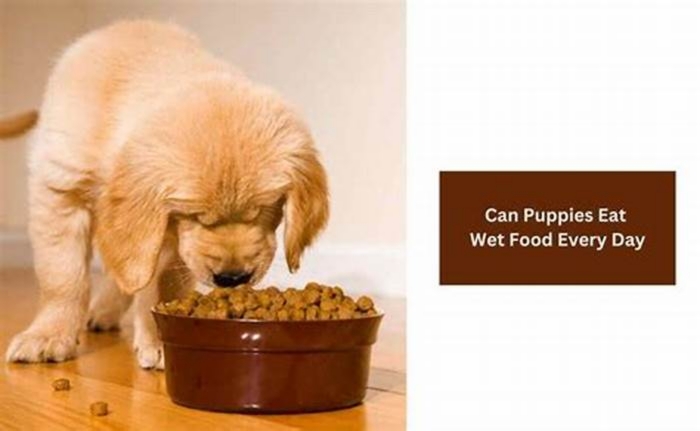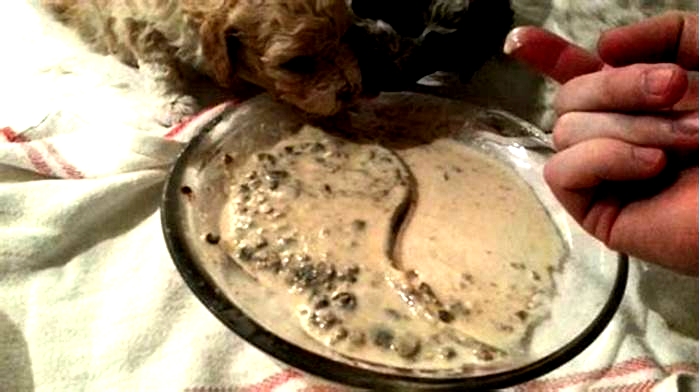When can puppies have their first bath
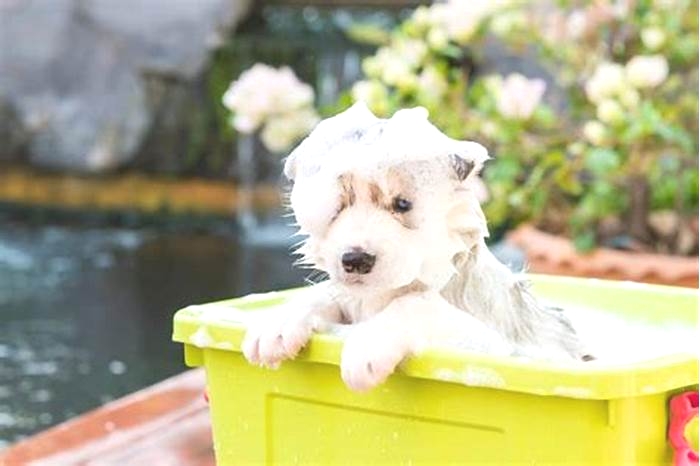
When Can You Give a Puppy a Bath for the First Time?
Unlike children who get themselves dirty, you cannot simply give a puppy a bath without at least a little preparation. Theres also the important issue of knowing how soon you can do this and what the right age to bathe a puppy is however tempting it might be.
If youre wondering when you can give puppies their first bath, heres all you need to know, plus some bathing tips.
When can you give a puppy a bath? You can give a puppy a bath as soon as they are 6 weeks old, but this does come with some risks including water inhalation. Ideally the best age you can give a puppy a bath would be nearer to being 2 months old.
Thats a generalized answer, so please read on for the how, why, and best practice for giving a puppy a bath after birth for the first time.
How soon can you give a puppy a bath after birth?
Through acclimation, your puppy can be introduced to bathing at a very young age, sometimes as soon as 4 weeks old after being born.
However, this isnt always advisable as there is a chance that they may accidentally get water into their lungs when they are this young. It is worth mentioning that this can be extremely dangerous or even lethal and as such should be taken very seriously.
What I recommend instead is that the age you can give a puppy a bath should mean you wait until they are 2 months old. You can then safely bathe your puppy for the first time without as many concerns as before.
Handy Hint: Many puppies will get the zoomies after their first bath and run around like crazy. Here are 5 reasons why they go mad after baths.
Having said that, many animal experts will tell you that any age after 6 weeks is okay to give your puppy a bath for the first time.
They say that after this time has passed you can then readily introduce them to the bath without as many worries over complications or danger.
Here are some more popular questions about bathing a puppy for the first time.

Can you bathe a puppy at 8 weeks old?
Based on my own experience and what the experts say, you can bathe a puppy at 8 weeks old. This is the 2-month age, and at this point in their development, bathing should be relatively simple.
You can see how to do it with the guide Ive written lower down the page.
Can you bathe a 3-week-old puppy?
It is far too young an age to bathe a 3-week-old puppy. It is best left to the mother to clean the puppy when they are this young.
How soon can you give a puppy a bath after being neutered or spayed?
Vets and experts recommend that you wait until 10 days has passed after spay or neuter surgery before bathing a puppy.
Handy Hint: If you want to bath your newborn puppy due to fleas, please read this guide instead: how to rid a puppy of fleas safely and effectively.
How do you bathe your puppy for the first time?
Whilst you might think its relatively obvious how you bathe a puppy, its not actually that simple if you want to be safe. There are some factors to take into consideration before you think about doing so.
Bathing a puppy for the first time can be an interesting experience, to say the least. Some pups will love it, whilst others will freak out and do everything they can to escape.
As you can imagine, part of this usually relates to their age; the younger a puppy is introduced to bathing the quicker it will become comfortable with it.
Older puppies will often struggle with bathing when compared to younger pups, and as such will need a lot of reassurance and patience from their owners before they begin to calm down and enjoy it.
Now that this has been explained, we can move on to the steps you need to take to bathe your pup for the first time:
Warning: When bathing a puppy, if you see symptoms of dry drowning (coughing or hacking, difficulty breathing, or extreme lethargy), get vet help immediately.
1. Prepare what you need and brush your puppy first
First things first, you should always make sure to brush your puppy before approaching the tub. You can buy a good brush for puppies on Amazon.
Once you have your brush, put the puppy on a table or somewhere they feel comfortable with. From there, you should begin to brush them gently, carefully working through any knots or tangles that they might have in their coat.
After this has been done, you can then begin to gather the supplies you need. Shampoo formulated specifically for dogs is a must (see on Amazon), as is a couple of warm towels and a pitcher.
You can also grab some steel wool to place in the drain if you are worried about your pups loose fur causing a blockage.
Also, if you plan to use a hairdryer make sure to leave it on around your pup before so that they are used to the sound of it. This will help them to feel less afraid when using it to dry them.
2. Bring your puppy into the bathroom
From here, you can bring your puppy into the bathroom. Make sure that the tub has already been filled, as the sound of running water can scare some puppies and get your treats ready!
After some encouragement (and likely some struggling), you can then gently place them into the bath.
3. Gently soak them in warm water
Begin soaking your puppy in warm water using the showerhead (on a low setting) or a pitcher. Make sure you are mindful of how hot the water is as you do not accidentally want to scald them. Likewise, try not to let the water get too cold either.
4. Start to use the shampoo
From here, mix the puppy shampoo with water, and using a soft sponge evenly spread the shampoo over your puppys fur. Lather their body all over, including the tail and underside, and be careful to avoid their eyes and ears.
5. Rinse them down
After you have scrubbed your puppy down gently for a while, begin to rinse all of the shampoo out of their coat. Use one hand to operate the shower nozzle and the other to hold a flannel over your poochs eyes.
Make sure that all the shampoo has been rinsed out and after this is done take them out of the bath.
6. Then dry them off thoroughly
Now comes the drying process. Although it might be a little annoying to let your bathroom get wet, allow your pup to shake themselves before you get the towel out. This is their distinctive way of getting rid of water and should not be discouraged.
Then gently begin to dry your puppy, working slowly from their torso to their face, legs, and paws.
In addition, you can use a hairdryer on a low setting to speed this process up if you so wish. Likewise, this can also be a more efficient way to dry breeds that have thicker coats.
Handy Hint: Did you know that you can also use wet wipes to clean a puppy. Heres how to use wet wipes safely with younger dogs.
How often should you bathe your puppy?
Maintaining a regular bathing routine for puppies is something all owners should do. Not only is it beneficial for keeping your house clean, but it is also vital for your pups health. Without cleaning, a puppys coat can quickly become a home for parasites and other equally nasty things.
Additionally, bathing is also important because it helps canines to heal any inflamed or infected skin they might have, as well as helping to repair any hairs they may have damaged.
Therefore, you should always make sure to bathe your puppy at least once a month.
However, if you so choose, it is fine to bathe them more regularly than this.
For example, if your puppy enjoys bath time you can wash them weekly, this of course depends on how dirty they are.
It is important to note, however, that some breeds can suffer from dry skin as well as other skin conditions and should not be washed as regularly as other breeds.
Likewise, dry skin is not always specific to breed, and any puppy or dog can develop it. If you find that this is the case for your pooch, then be sure to talk to a vet who can give you further advice on how to deal with the problem.
What is the right shampoo for your pup?
Picking the right shampoo for your pup will depend on a variety of different factors. For example, the length of their coat, how old they are, and if they have any sort of health condition.
There are two types of shampoos you can use on your puppy, one that can be used mainly for dogs and the other being made specifically for pups.
Although the latter is often the best choice, most dog shampoos work fine for puppies and will not have any negative effects on them. Personally I love this one I recommended earlier buy on Amazon.
However, if given the choice, it is usually better to pick shampoos aimed at puppies as these are softer. Additionally, they are usually manufactured with a no-tear formula that is designed to be non-irritating if it gets in your pups eyes.
When shopping for a shampoo you should make sure to check what ingredients are in the bottle. It is best to avoid any shampoos that have artificially made fragrances or dyes contained in them, as these can irritate your puppys skin.
Instead, you should look out for shampoos with natural ingredients, such as lavender, citrus, and chamomile.
Conclusion
Knowing when you can give a puppy a bath for the first time is an important part of pet ownership. The bottom line is, they will be cleaned my their mother, so wont need to be bathed until they are 8 weeks or 2 months old.
And believe me, once they hit that age they will need a bath from time to time! Puppies are full of personality, boisterous, and very mischievous.
Because of these traits, puppies, similar to children, have a tendency to get themselves dirty extremely quickly. This can at times be frustrating for owners, especially when this happens multiple times in the same day.
Most owners find that their puppies are like magnets when it comes to dirt, and because of this, they give up a little on maintaining their clean homes.
They begin to accept the fact that there will be regular muddy paw prints on their kitchen floors, as well as a permanent odor of wet and smelly dog wafting through the house. Puppies and dogs absolutely love to get muddy, so its something that wont get better over time!
Unfortunately, trying to keep a puppy from getting dirty is usually a fruitless endeavor.
No matter what you do, they will find a way to roll in that mucky puddle or cover themselves in that mountain of dirt. Thankfully, there is one way to clean them up when this does happen giving your puppy a bath for the first time.
You might also like
Here are some more guides for first time puppy owners.
Image in header via https://pixabay.com/photos/dog-puppy-bath-water-person-girl-237193/
Make Puppy Bath Time Simple and Fun
Puppy bath time should be fun! But giving a puppy a bath something that new puppy parents often worry about. Today we are going to take you step by step through the baby dog bathing process. Making it as easy as possible. Ill share how often to bathe a puppy, where to do it, what puppy cleaning supplies you need, and give you instructions for making your bath time routine puppy perfect.
Contents
When Can You Give A Puppy A Bath?
So when can puppies have their first bath? The answer is that its absolutely fine to give your new puppy a bath if they need one, on their very first day home. The chances are that wont be necessary. But it wont hurt. But what do we mean by if they need one Should you wait until your puppy is muddy or visibly dirty?
You dont have to wait until your puppy gets dirty to bathe them. You can bathe your puppy if they smell most puppies smell great, but occasionally a new puppy is a bit smelly when the breeder hands it over.
You can also bathe your puppy just to get them used to it, and well talk a bit more about that in a moment. And later on if your puppy has been swimming in salt water a bath or a good rinse in clean water may be in order.
Puppys First Bath
Planning your puppys first bath? Puppy bath time doesnt need to be a daily event. Small puppies dont need daily baths in the same way that human babies do. Plus, some folks with clean healthy dogs never bathe their puppies at all. Unless the puppy gets poop on themselves or steps in something equally nasty, of course.
But for now, this means there is no specific date on which you should give your puppy his first bath. Lets take a look at when you might want to give your puppy his first bath, and how often you should bathe him after this.
Though you should be careful if you are raising a litter of puppies not to bathe them unless completely necessary before they are 8 weeks old. Bathing puppies at 3 weeks old might seem appealing as they are just starting to get messy, but wiping them with a damp cloth and towel drying will suffice.
Can You Bathe a Puppy at 8 Weeks Old?
There is no minimum puppy bath age. You can bathe a puppy at 8 weeks old, if he needs a bath. Most puppies will at some point. After all, they are prone to falling and stepping in poops and puddles! But, this doesnt mean your puppy will need a full bath every day.
When Can You Bathe Them Regularly?
There are a couple of cons to bathing dogs regularly. Especially once they are out and about in the world. But, there are some pros too, so well look at both.
One of the main disadvantages of regular baths is that even the gentlest of shampoo is likely to disrupt the natural balance of your puppys skin and fur to some extent. Plus, it disrupts the natural waterproofing that fur develops as your puppy matures.
Dont Lose Friendly Bacteria
Under your puppys fur is a little microworld of friendly bacteria. This helps to keep your puppys skin at just the right level of acidity. Changing that balance with shampoo may reduce your puppys natural resistance to skin problems and infections. Your puppys soft baby coat is replaced by a typical adult coat in the first few months of life. Lets take a look at this coat in more detail.
Waterproof Adult Fur
Between six and twelve months old, most puppies will have grown their adult fur. One of the traits of adult fur in many dogs is that it is fairly waterproof. This waterproofing is made by oils from the skin. Plus, it helps keep your dog warm and comfortable when he swims or goes out in the rain. This is also what makes the smears youll see on a white wall if your dog regularly sleeps up against it!
Shampoo strips out those natural oils. When this happens, water can penetrate your dogs coat right through to the skin. So, regular baths are neither essential, nor even a very good thing. But surely your pup needs a wash from time to time or hell get smelly? So just how often can you bathe a puppy?
How Often Should I Bathe My Puppy?
So theres a good case for not bathing an adult dog too often, and good reasons to bathe a puppy regularly. But how often should you bathe your puppy? Are we talking daily baths here? There is no hard and fast rule but heres a puppy bathing schedule for you to use as a guide:
- Once a week until three months old
- Once a month until six months old
- Twice a year thereafter or as necessary
But, bear in mind that it probably wont hurt your puppy if you never bathe them at all. So why use the schedule above? I mentioned before that there were some benefits to regular bathing, lets look at those now.
Benefits of Regular Baths
One of the major benefits is to let the puppy to get used to being bathed. Lets face it. Hes almost certainly going to need a bath at some point in his life. Your puppy may need a bath:
- For medical reasons (infections, parasites, allergies)
- To remove nasty substances from fur
- To reduce odor
If a puppy has never had one before, a bath on his third birthday because he meets a skunk or steps in some engine oil, is going to be a pretty traumatic experience.
It Helps You Too!
The other benefit is really for you. Some breeds of dog, especially some of the sporting breeds have a natural strong body odor. Labradors and other sporting dogs can be very smelly. Some dogs are affected more than others. My yellow Lab for example smells very strong if not bathed occasionally. While my chocolate Lab has only the mildest body odor.
Many dogs smell stronger as they get older. Older dogs can get very smelly if not bathed occasionally. As can dogs that are more likely to get grubby due to having folded skin, like a Bulldog, or short legs, like a Dachshund. Some dogs even have a tendency to pee on their own legs, like the lovely Whippet, so theyll need a more frequent wash!
Staying Happy
To avoid upsetting your older dog if you need to start giving them baths from time to time, its a good idea to get a puppy used to baths right now. This means its a good thing for all puppies to be used to happy bath times from an early age.
Bathe your puppy once a week for the first three or four weeks, then once a month until they are six months old, then at least twice a year after. Then, bath-time should be a peaceful non event for your dog. He wont be scared when he sees the shampoo come out. The whole experience will be no big deal.
Some dogs will need bathing more regularly than others due to their coat type. Curly dogs like Poodles or Doodles need bathing more often than Labs or German Shepherd dogs with their straight double coats. Dogs with short single layered coats will need the least scrubbing!
What Will You Need For Your Puppys First Bath?
To bathe your puppy you will need:
- Puppy shampoo
- A small tub
- Lukewarm water
- A wide mouthed comb
- Puppy conditioner
- Towels
Dont be tempted to use human shampoo on a puppy. If you get it in his eyes they will sting and he wont want to have another bath, ever again. Baby shampoo can be used in an emergency. But a dogs skin is less acid than human skin. So, its best to use a puppy shampoo designed for the purpose.
Where To Bathe A Puppy
Bathing your dog in the bathtub is fine for older dogs, but some puppies may panic if plunged into a giant white bathtub. Which if you think about it, isnt really that surprising! You can help accustom your puppy to the big bath by standing him in it for a few seconds, a few times a day. Plus, give him some tasty treats to eat while hes in there.
A popular alternative for bathing a puppy is the kitchen sink. But be careful as wet puppies are slippery and if he wriggles out he may fall and hurt himself. If your puppy doesnt like the bathtub, a safer place is in a plastic washing up bowl on the kitchen floor!
What About Showers?
With a small puppy you might be tempted take them into the shower with you, but some will find this a bit scary, and you will have to have the water a lot cooler than you would feel comfortable with, so its not a great idea. If the weather is fine you can do the whole thing outside, using a portable dog shower.
My portable dog shower has made puppy bath time much easier. And the 5 litre tank is enough for one adult Labrador without refilling. Especially if you make her wet with water from a cup first. You can also get battery operated portable shower heads. These have a little pump at one end that you stick in a bucket of water. I should think they are easier to store than the pump action container type that I use.
Bathing A Puppy, Step By Step
Now weve taken a good look at when to bathe your puppy, plus the pros and cons of puppy bath time. So, lets move on to the actual bathing process.
Youll need puppy soap, or puppy shampoo, which is especially formulated so as not to sting your puppys eyes. And has the extra benefit of smelling wonderful!
Some dog shampoos are suitable for young puppies, but you do need to read the label. You dont need medicated puppy shampoo unless your veterinarian has advised it.
Preparation
First of all, make sure you have everything ready. If you dont have a hand held shower spray, youll need an enamel or plastic cup for rinsing. Or a portable shower. Set your cup out within reach of the bath. Along with the puppy shampoo or puppy soap, and at least two good sized towels.
Many puppies will also love some tasty treats. So have a pot of these to hand too. You want to make bath time the best fun so that he is happy to repeat it next time its needed.
It is also a really great idea to have a helper with you the first time you bath him. Controlling a wet wriggling puppy is not the easiest of tasks, so a second person can help! On top of all this, you need to have an extra towel or handy to dry the wet floor when youre finished!
Puppy Bath Water Temperature
First you need to make sure youre using the right temperature of water. You can test the heat on the inside of your wrist to avoid burning your puppy. Lukewarm water will make the whole process the most comfortable for your puppy. Wet the puppy with this warm water a little before you apply shampoo. But dont be surprised if this is difficult!
Most puppies have quite water repellent coats. Spread a little slick of shampoo down the puppys spine. Then with very wet hands start to work it into his coat. Do each leg in turn and then his tummy and bottom. Dont shampoo the puppys face unless absolutely essential. And keep the shampoo away from his eyes.
Rinse and Repeat!
Keep adding a little more water to spread it around and overcome the water resistance of the coat. Rinse thoroughly with your plastic cup or (shower spray). And change the water before repeating. The second shampoo will be much more successful and you should be able to work up a nice lather. It is very difficult to thoroughly wet most dogs.
Give the puppy a little treat at frequent intervals. You may need to use a whole meal up this way the first time, to keep him happy. Its really important to make sure your puppy is thoroughly rinsed off. Leaving any shampoo residue on your puppy can cause skin problems.
Should I Use Dog Conditioner?
Some people like to use dog conditioner as well as shampoo when they are bathing their dog. Especially if their dog has longer fur, as it can help to prevent knots and tangles. However, this is not essential.
You do not need to use conditioner when bathing your puppy, shampoo will be enough. But if you do decide to use one, make sure it is specifically made for dogs. Plus, make sure you rinse thoroughly after conditioning, so that none of the product is left on your dogs skin.
Puppy Bathing Tips
When your puppy has been thoroughly rinsed off, lay a towel over your lap and scoop him up in the other. He may shake off the water before you are able to do this, so prepare to get a little wet! Pop your pup into your lap and give him a good rub down. Most puppies will find this fun and exciting. So be prepared for playful nipping and grabbing at the towel.
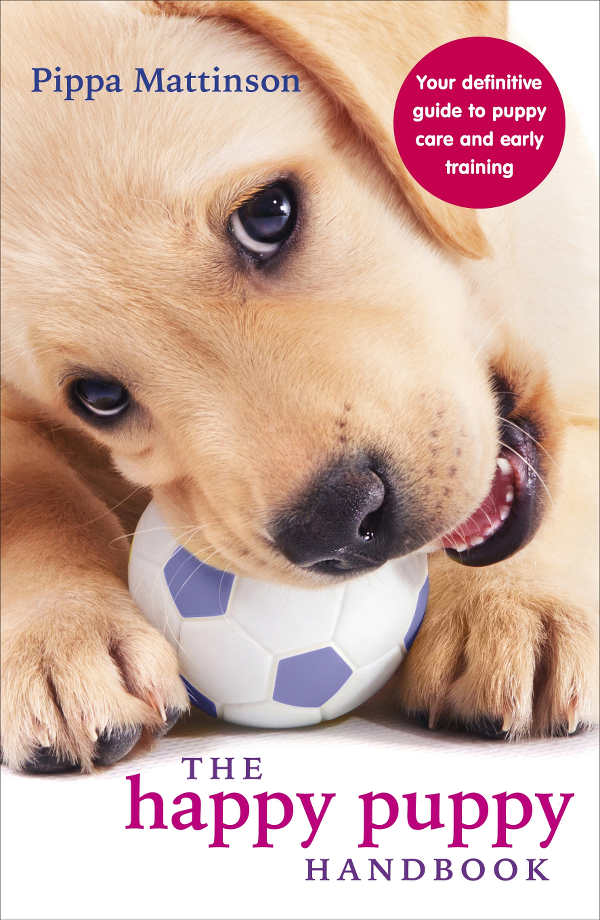 (paid link)
(paid link) If you have someone helping you, it can be easier for one person to gently hold onto the puppy whilst the other dries him off. He will shake when you put him down. This will happen no matter how well you dry him!
Air Dry vs Hair Dry
You can leave him to air-dry in a warm room. Give him a towel to scoot around on if he wants. As this will speed up his drying and keep the damp away from some of the rest of your house.
If he seems happy then put it on a low, warm setting and focus the stream of air from the dryer through your hand with your fingers spread out. This is so you can make sure the temperature isnt too hot on his skin.
You can dry your puppy with a hairdryer. If he doesnt mind the noise. But, if he seems unsure, then you have two options. Either dont use it, or very gradually get him used to the noise.
Youll need to do this at a distance, then move slowly towards them whilst someone cuddles your pup in their lap and gives them treats. Do this every day and make very slow progress. If your pup seems upset, move back further away to a point they are happy. Only inch closer when they appear to be completely disinterested in its noise.
Totally Dry Dogs
Its important to dry your dog thoroughly, especially if they have a double coat. Leaving your dogs coat wet can encourage fungal infections or hot spots. So, feel your dogs coat with your fingers after a bath to find any areas that need extra attention.
Plus, make sure to speak to your vet if your dog shows signs of irritation following his bath. They can help you find the cause of this, and avoid any further problems in the future.
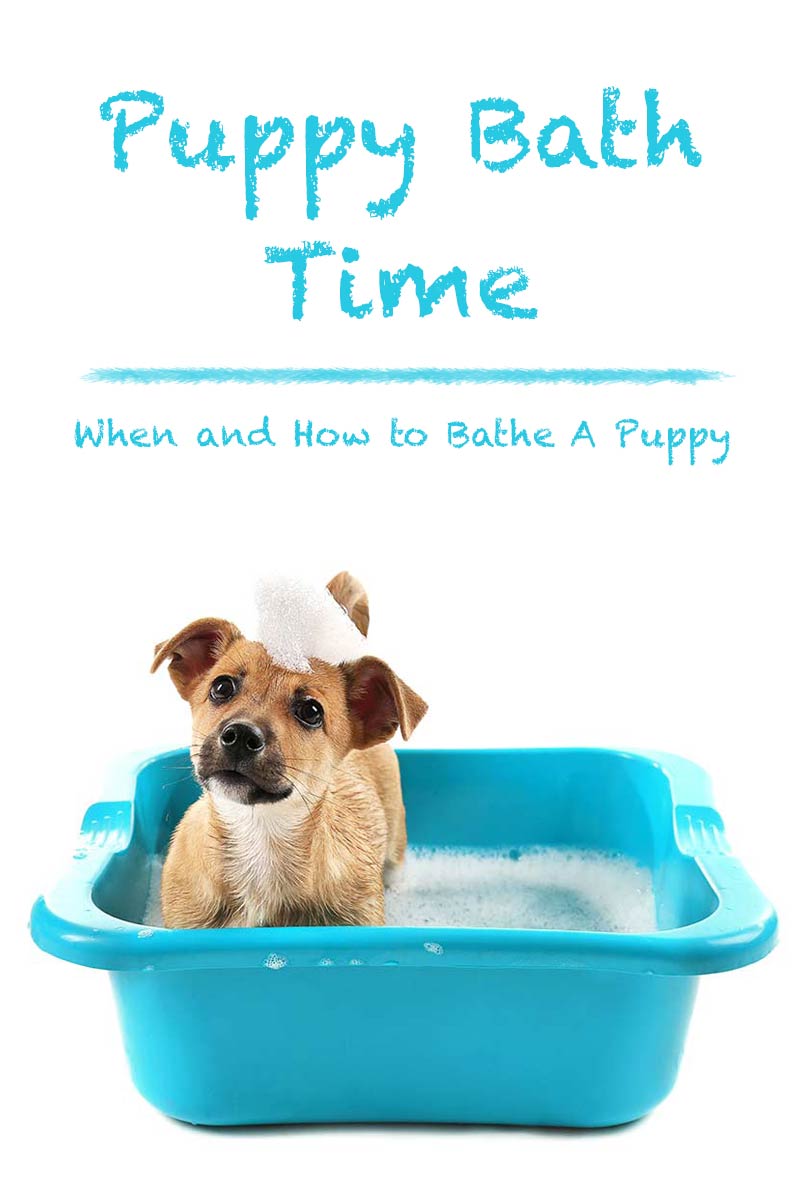
Puppy Bath Time Routines
It will help you and your dog to have a clear routine for bath time. Keep it going with simple steps, setting up the equipment before you start, and have a clear end time when drying is over. Make sure to reward them throughout, and remember not to over wash them.
However you choose to wash and dry your pup, just remember to make puppy bath time as enjoyable and fun for him as possible. Plus, use a dog shampoo specifically made for dogs to avoid any harsh soaps.
But, by all means bathe your puppy if he is really grubby or has rolled in something smelly. And bathe him often enough for it not to be an alien experience. But dont overdo it. For small mishaps, or muddy paws, wet wipes are often all that youll need. And remember, there is no such thing as too many towels, when you have a wet dog in the room!





